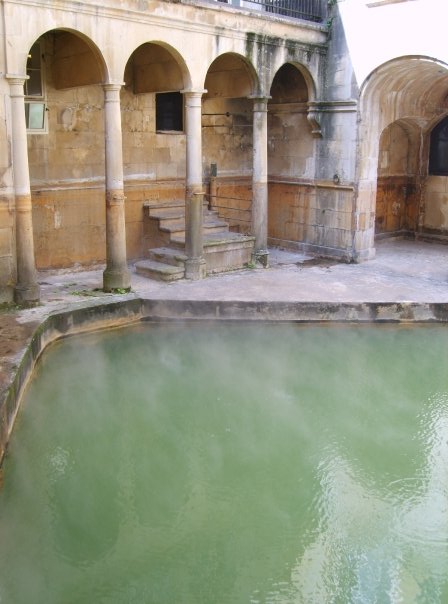
Taking a bath can be relaxing and therapeutic, it can relieve tired muscles and help us sleep better at night. I’m sure many of you are also aware, if only through Jane Austen’s characters frequent mentions of it, that bathing, and drinking the bath waters (I wouldn’t recommend it) was a popular treatment option in the past. It was popular, though, before Austen’s era. Indeed bathing was a staple of seventeenth and eighteenth-century treatments for a range of disorders. In particular, as is relevant to my own research, it was thought to beneficial to those struggling to conceive and carry a child to term.
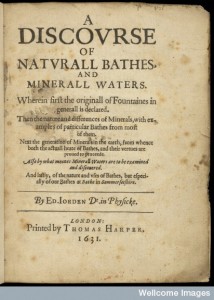
Healing waters were not always viewed in purely medical terms. Alexandra Walsham, in her wonderful book The Reformation of the Landscape, has shown how pre-reformation England had a wealth of holy wells and sacred sites that were renowned for miraculous healing.1 During the Reformation when miraculous healing was denounced and denied, some wells went through a transformation, they continued to be seen as sites of healing and well-being, but this was now explained through the physical properties of the water as you can see from the title page of this 1630s medical treatise.
In 1697 Robert Pierce published his Bath Memoirs, observations of his 43 years practising as a physician at the baths and the cures that he had seen over that time. Pierce still acknowledged that these cures happened by ‘God’s blessing’ as all early modern medical practitioners would have done, but did not believe these cures were miraculous. Nonetheless, the tone of his observations was often exultant and suggested that the cures wrought by the waters were above and beyond what other forms of medicine could achieve.
In his book he dedicated a whole chapter to ‘those ‘Maladies that are peculiar to the Female Sex’, including greensickness, barrenness and miscarriage.2 In his introduction to this section Pierce was careful to point out that he would observe the bounds of modesty. He did not wish to publish anything ‘they would dislike’ and was keen to point out that, unlike most of his observations, stories concerning these delicate disorders would not reveal the names of the patient.3 This he claimed was because he could ‘not forget that I had a Mother, a Wife, and two Daughters’ to whom he owed duty, respect and love.4
Yet many of his observations of female reproductive health included the names of the female patient or identifying information. For example, he explained that,
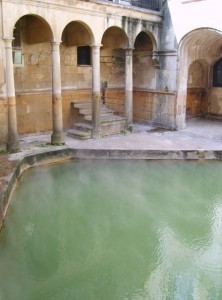
‘My Lord Blessington’s Lady, Daughter to the Countess of Montworth, from the Kingdom of Ireland, a very weakly and sickly Person, having been some Years marry’d, and never had a Child, came to the Bath in June .. for Health, as well as for Children, and did both drink the Waters, and bathe; and used said Remedies suitable to the Symptoms she complain’d of; and by the Blessing of God upon the Means, she not only recover’d a better State of Health, but afterwads [sic] became a Mother of Children.’5
Interestingly Pierce separated out two forms of barrenness that were often considered simultaneously; he devoted the second section of this chapter to women who had ‘a Child, or Children’ but had then endured a lengthy interlude where they could not conceive – until of course using the bath had reinvigorated their reproductive capacities. One such woman, Pierce told his readers, was the wife of Thomas Horton Esquire, who ‘after Seven Years interval, from having a Child’ concluded that as she was 42 years old ‘she had done breeding’.6 She came to Bath following a fall from a horse that had left her lame, but ‘went home and quickly Conceiv’d … and had a Son, who lived to be a proper, hopeful, young Gentleman.’7 Pierce doesn’t seem to spare a thought for whether this wife was glad to have had her fertility renewed at this age or not, but simply marvels at the power of the water to restore fertility.
Finally in his section on miscarriage Pierce maintained his stance that the bath waters produced astounding effects. He claimed that Lady Killmurry Countess of Huntington had miscarried at least three times but having used the ‘Bath but one Season, and that but for a Month or Five Weeks … Conceiv’d with Child, went out her full time, and became a Mother of a living, and lively Son’.8
Pierce then was adamant that bathing and drinking the bath waters were beneficial to women who struggled to conceive and bear healthy children. He did not at any point explain, medically, how the waters achieved this (later texts like Dr Carr’s Medicinal Epistles 1714 would attempt to explain the actions of spa waters upon the reproductive organs) he was content only to impress upon his readers the wondrous (if not miraculous) cures that made many a woman a happy (we presume) mother. Even more interestingly Pierce separated this chapter into sections that outlined the different ways in which women could be troubled, in order to highlight the relevance of such a cure at every stage of a woman’s childbearing career.
____________
1. Alexandra Walsham, The Reformation of the Landscape: Religion, Identity, & Memory in Early Modern Britain and Ireland (Oxford, 2011), 395.
2. Robert Pierce, Bath Memoirs, or, observations in three and forty years practice, at the Bath what cures have been there wrought, (both by bathing and drinking these waters by God’s blessing, on the directions of Robert Peirce, Dr. in physick, and Fellow of the College of Physicians in London, a constant inhabitant in Bath, from the year 1653. to this present year 1697 (Bristol, 1697), p. 187.
3. Ibid, p.189.
4.Ibid, p. 188.
5. Ibid, p. 197.
6. Ibid, p. 199.
7. Ibid.
8. Ibid, pp. 204-205.
© Copyright Jennifer Evans, all rights reserved.
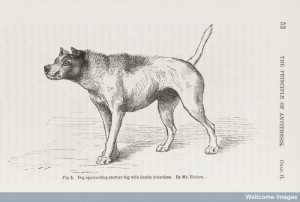

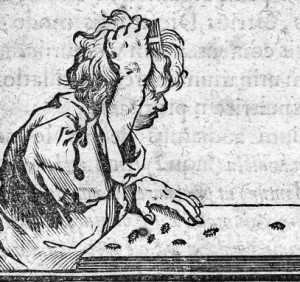
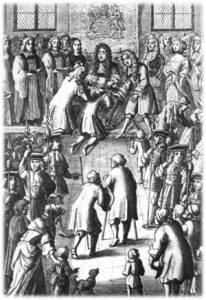
The link between bathing and the treatment of infertility is a very interesting one, in part because it also had a satirical dimension.
Because bathing culture in the seventeenth and eighteenth centuries involved young people milling about in a relatively informal setting, it was suggested that the curative powers of the baths had less to do with the waters, and more with the “infertile” women finding partners other than their husbands.
Fascinating! I didn’t want to write too much on this as I am waiting to read your thoughts when the book comes out.
I love that idea though
Interesting! I read a book published in the 19th century where many of those same ideas were also evident – I was always curious to see where the ideas may have come from. (This is the book if you’re interested.
Thanks for the post 🙂
I always find it fascinating how much longevity medical ideas have, particularly given all the changed of the 18th and 19th centuries. thanks for the link
This was fascinating.
I wonder if you could help me, since this is your area of interest? I’m trying to find information on remedies for infertility that were around in the Victorian period – could you recommend any sources?
I’m sorry to say that the Victorian era is a little late for my own interests. But I’m sure there are books out there on this topic.